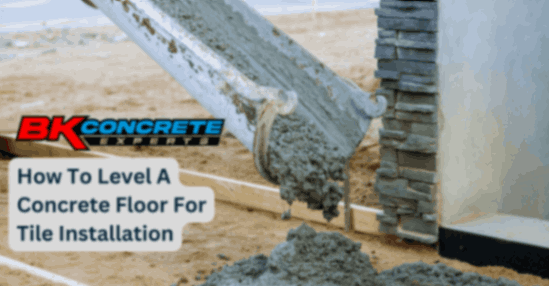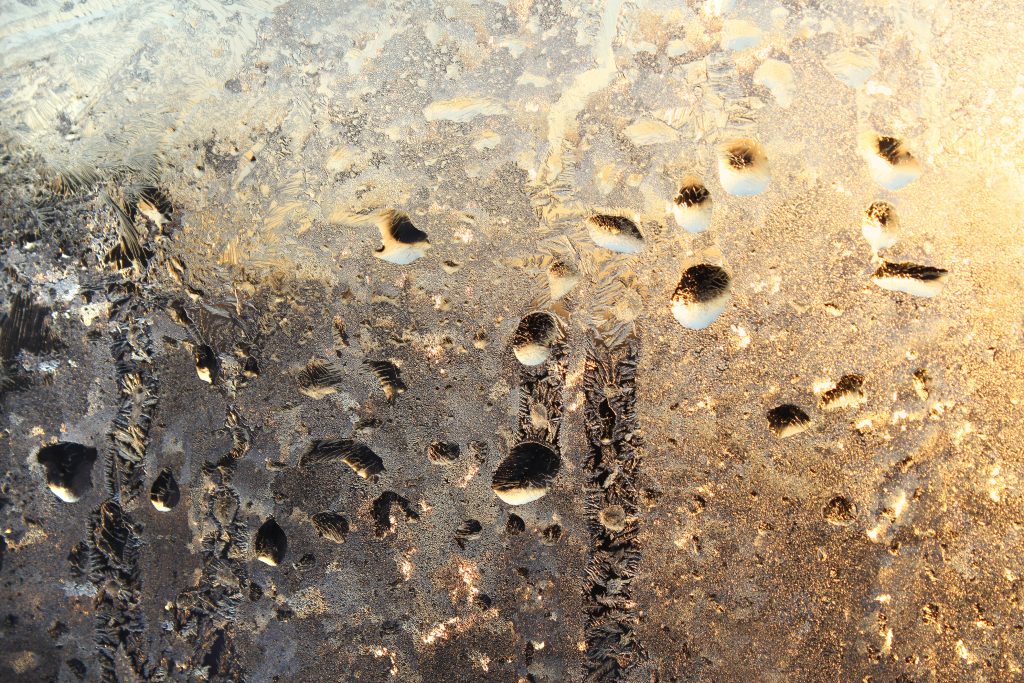Resurfacing a garage floor is a practical renovation task for homeowners looking to improve the appearance and functionality of their garage space. Over time, concrete floors may become pitted, stained, or cracked due to vehicular traffic, chemical spills, and the natural settling of the structure. Resurfacing offers a cost-effective solution that not only enhances the aesthetic appeal but also extends the life of the garage floor by adding a new layer of material that protects against future wear and tear.
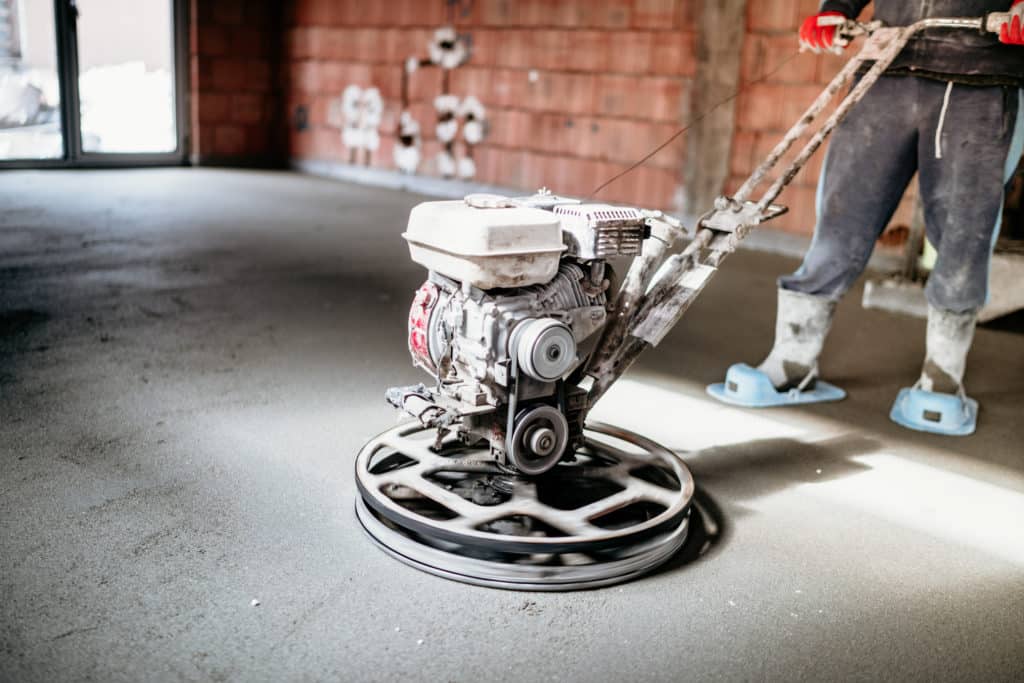
Worker with power trowel tool finishing concrete floor, screed, smooth concrete surface
The process typically involves cleaning the existing surface, repairing any significant damage, and applying a resurfacing compound. Various resurfacing options exist, including epoxy coatings, concrete overlays, and polyaspartic finishes, each with its own set of advantages. Homeowners can choose a resurfacing method that best suits their needs based on durability, maintenance requirements, and visual preference.
Proper execution of a garage floor resurfacing project requires a certain level of skill and knowledge of materials. While some may opt for a do-it-yourself approach, others may benefit from engaging professionals to ensure a high-quality finish. Apart from the immediately visible improvement, a well-resurfaced garage floor can increase the overall value of the property and provide a safer, more durable surface for everyday use.
Understanding Garage Floor Resurfacing
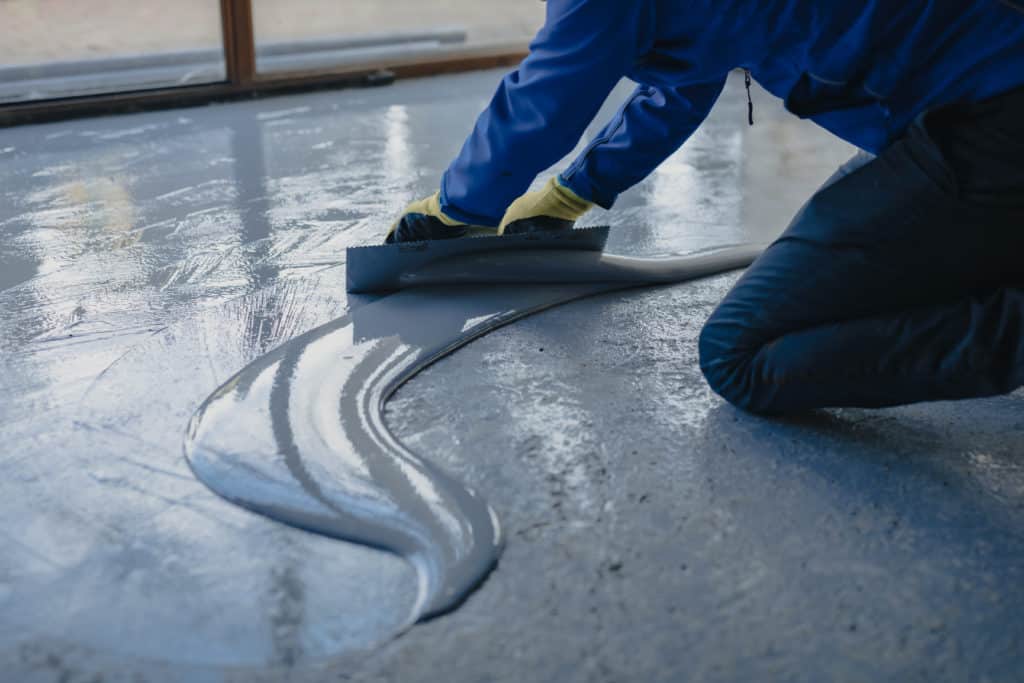
Garage floor resurfacing is a process that revitalizes a worn concrete garage floor by adding a new surface layer, enhancing both its durability and appearance. It involves the careful preparation of the existing floor and the application of a resurfacing material.
Benefits of Resurfacing
- Durability: Resurfacing a garage floor extends its life by providing an additional layer of protection against wear and tear. The fresh application of resurfacing material can make the floor more resistant to impacts, stains, and moisture, contributing to a more long-lasting surface.
- Appearance: Aesthetically, resurfacing can transform a garage from a bland or cracked concrete slab to a sleek and cohesive space. The vast array of finishes available allows individuals to customize the look of their garage according to their personal preferences.
Resurfacing Vs. Replacement
- Cost and Time: Resurfacing a concrete garage floor is generally more cost-effective and less time-consuming than a full replacement. Replacement involves the demolition of the existing floor which is more labor-intensive and requires a longer period for curing the new concrete.
- Extent of Damage: In cases where the concrete garage floor is severely damaged or uneven, it could necessitate a complete replacement. However, for floors with minor to moderate imperfections, resurfacing is a viable solution that can address issues without the need for more extensive work.
Preparation for Resurfacing

Before applying a new surface to a garage floor, meticulous preparation is vital. This includes thoroughly assessing the floor’s current condition and performing any necessary cleaning and repairs.
Assessing the Current Floor Condition
Inspect the concrete floor for any signs of damage, such as cracks, uneven areas, or pitting. It’s essential to address these issues as they can affect how well the concrete resurfacer will bond to the original surface. The extent of the damage determines the required repair method and the type of resurfacing product to use.
Cleaning and Repairing the Concrete
Begin with removing all debris by sweeping or using a vacuum. A clean surface ensures better adhesion for the new layer. Here’s a checklist to follow:
- Clean: Thoroughly wash the surface to remove dirt and dust. For stubborn oil stains and grease, apply a concrete degreaser to break down these contaminants.
- Repair: Use a concrete patching compound to fill in small cracks and holes. Deep or wide cracks might need a different approach to ensure stability and longevity.
- Prepare for Resurfacing: After cleaning and repair, allow the floor to dry fully, as moisture can compromise the concrete resurfacer application.
Repairing and cleaning the garage floor sets a solid foundation for resurfacing, contributing to a durable and aesthetic finish.
Choosing Resurfacing Materials
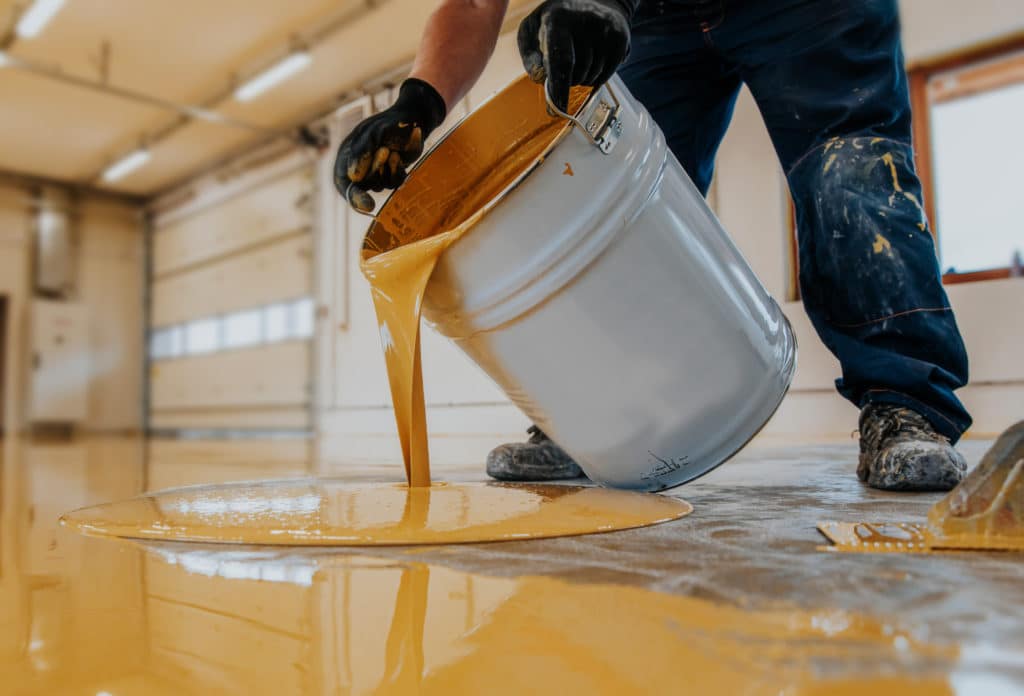
When selecting materials to resurface garage floors, it’s crucial to understand the performance characteristics and application methods of available coatings and sealants. These materials will determine the durability, appearance, and maintenance requirements of the finished floor.
Comparing Epoxy and Polyaspartic Coatings
Epoxy Coating is known for its strong adhesive properties, robust protection against stains, and a high level of durability. Commonly used in various garage environments, epoxy coatings are often praised for their longevity and resistance to heavy traffic. They typically require a longer curing time, which can span several days.
On the other hand, Polyaspartic Coating offers a quick curing time, which may be beneficial for those needing a faster turnaround. This type of coating is also resistant to UV light, which helps prevent yellowing over time, and provides strong chemical and abrasion resistance, similar to epoxy.
When choosing between the two, consider factors such as:
- Time constraints for application and curing
- Desired durability and resistance features
- Long-term maintenance needs
- Specific usage conditions of the garage area
Selecting the Right Concrete Sealer
Choosing the proper concrete seal for a resurfacing project is essential for protecting the underlying material from moisture, chemicals, and wear. Here are the main types of sealers:
- Acrylic Sealers: They are cost-effective and can be applied easily. Acrylic sealers are suitable for those seeking a balance between performance and affordability but may require more frequent reapplication.
- Urethane Sealers: These provide a thicker coating and improved abrasion resistance compared to acrylics. A urethane sealer is often used in high-traffic areas because of its durability.
- Epoxy or Polyaspartic Sealants: As part of the coating systems mentioned above, they can serve as sealants by forming a high-strength protective layer over the concrete.
The choice of sealer should align with the expected traffic, exposure to chemicals, desired aesthetics, and the specific protection needs of the garage floor.
Resurfacing Process

Resurfacing a garage floor involves careful preparation and application techniques to ensure a durable and smooth finish. The process typically requires a thorough cleaning, preparation of the resurfacing product, and finishing with proper sealing.
Mixing and Applying the Resurfacer
First, one should clean the garage floor using a pressure washer to remove all debris, oil, and existing paint. Once the floor is clean and dry, it’s time to prepare the resurfacing product. It’s crucial to follow the manufacturer’s instructions for mixing to ensure the right consistency and optimal bonding. The mixed product should have a uniform texture without lumps.
Next, applying the resurfacer begins. Start near the back of the garage and work forward to maintain an exit path. Use tools such as a squeegee for spreading the mixture and a roller to ensure an even thickness throughout. Work in small sections to maintain control over the material, maintaining a wet edge to avoid visible seams.
Applying Finishing Touches
After the resurfacer has been applied, smoothing out any imperfections can be done with a brush or trowel, ensuring an even, professional finish. Depending on the product used, one may need to apply a sealer to protect the new surface, which enhances its durability and appearance.
It’s essential to check the moisture levels in the concrete before sealing to prevent bubbling or poor adhesion. Lastly, allowing the resurfaced floor to dry and cure properly is vital for achieving optimal hardness and longevity. This usually takes at least 24 hours, but curing times may vary based on temperature and humidity.
Maintenance and Aftercare
After resurfacing a garage floor, it’s essential to maintain the new surface to extend its life and keep it looking fresh. Proper aftercare involves regular cleaning and immediate attention to spills and stains to prevent damage.
Regular Cleaning Recommendations
To maintain a resurfaced garage floor, it is recommended to undertake routine cleaning. One should sweep the floor weekly to remove dust and debris that could scratch the coating. For more thorough cleaning, a mop with a mild cleaning solution is advised to remove grime and maintain the floor’s appearance. Where foot traffic is high, increase cleaning frequency to preserve the floor’s protective layers and aesthetic quality.
- Weekly tasks:
- Sweep with a soft-bristle broom
- Mop with a pH-neutral cleaner diluted in water
- Monthly tasks:
- Inspect for wear and reapply sealer if necessary
- Check for and remove any buildup of chemicals that can degrade the coating
Dealing with Spills and Stains
Spills should be addressed immediately—the longer a spill remains on the garage flooring, the more likely it is to stain or damage the surface. For oil and chemical spills, use an absorbent material like kitty litter, letting it sit for several hours before sweeping it away. Follow up with a gentle cleaner to remove any residue. It’s crucial to use a cleaner that is compatible with the garage floor coatings to avoid any degradation.
For spills:
- Oil/Chemicals:
- Absorb with kitty litter
- Sweep and clean with a suitable garage floor cleaner
- Stains:
- Apply a poultice if necessary
- Rinse with water and repeat if the stain persists
By adhering to these guidelines, one can assure prolonging the durability and preserving the surface integrity of the garage flooring from the wearing effects of both sunlight exposure and daily use.

 CALL US NOW
CALL US NOW